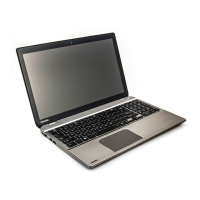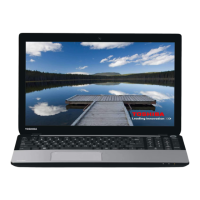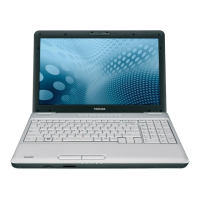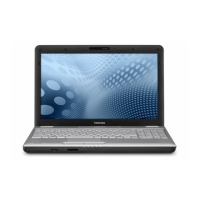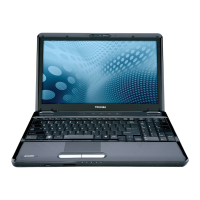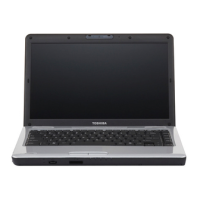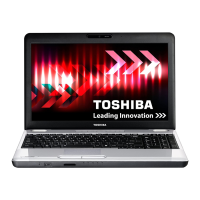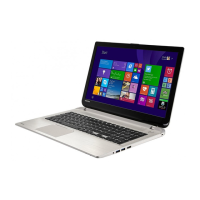
Do you have a question about the Toshiba Satellite L50-B and is the answer not in the manual?
| Optical Drive | DVD Super Multi Drive |
|---|---|
| Connectivity | Wi-Fi 802.11 b/g/n, Bluetooth 4.0 |
| Processor | Intel Core i3/i5/i7 (varies by model) |
| Display | 15.6-inch HD (1366x768) or Full HD (1920x1080) |
| Operating System | Windows 8.1 |
| Battery | 4-cell Lithium-ion |
| Ports | USB 2.0, USB 3.0, HDMI, Ethernet, headphone/microphone combo jack, SD card reader |
| Dimensions | 380 x 258 x 28.5 mm (14.96 x 10.16 x 1.12 inches) |
| Storage | 500GB/1TB HDD or 128GB/256GB SSD (varies by model) |
Information on copyright, disclaimers, and trademarks.
Details on regulatory compliance, including FCC and EU directives.
Statement of compliance with European directives and CE marking.
Guidelines on operating the computer in different environments and safety.
Instructions for proper disposal of the product and its batteries.
Licensing information for video standards used in the product.
List of included items, checks, and manual formatting conventions.
Steps for setting up and using the computer for the first time.
Overview of Windows features like Start screen, Charms, Tiles.
Instructions for shutting down the computer in various modes.
Identifies ports and components on the front, sides, back, and underside.
Details on the internal hardware components of the computer.
Explains power indicators and battery status.
Explains how to use touch screen and touch pad gestures.
Details about keyboard layout, keys, and indicators.
Information on using DVD and Blu-ray drives, formats, and operations.
Usage and limitations of CyberLink PowerDVD and Blu-ray Player.
How to use 3D playback and manage battery life.
Using LAN, memory card slots, and connecting external displays.
Using security lock and overview of optional accessories.
Controls for audio volume, microphone, and video modes.
Describes pre-installed utilities and their functions.
Details on automatic power off, sleep/hibernate, and battery saving.
Managing passwords and configuring system settings.
Using USB ports for charging devices and data transfer.
PC Health Monitor, system recovery, and media creation.
Guidelines for identifying and resolving problems effectively.
Troubleshooting steps for various hardware and software problems.
Detailed troubleshooting for Power, HDD, Keyboard, Display, etc.
Troubleshooting LAN, Wireless LAN, and Bluetooth connections.
Information on how to contact TOSHIBA for assistance.
Summarizes physical dimensions, environmental, and power requirements.
Details on wireless technology, health aspects, and regulations.
Explanations for icons, CPU, memory, battery, and glossary terms.
Lists common abbreviations used throughout the manual.

